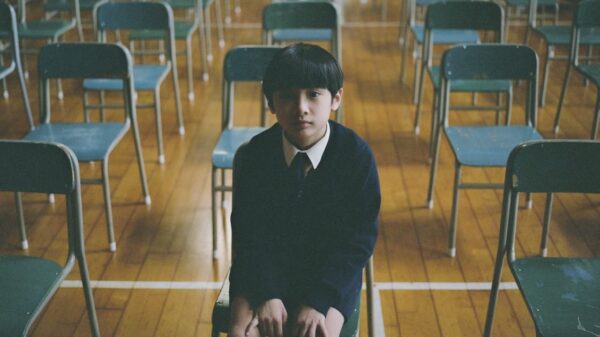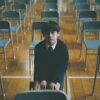Culture Editor Alex Blank on Tate Modern’s collection, The Media Networks, which presents artistic responses to mass media over the past one hundred years.
Standing in front of “Babel 2001†by Clido Meireles, a tower reminiscent of the Tower of Babel but made from hundreds of analogue radios tuned to multiple different stations, all I could think was: “You’re exactly right. This is too much. And I don’t think I can do it anymoreâ€. And then I moved on to another room, to watch another art work, read another description and make more notes, as there is always too much to see and not enough time to grasp it all.
As with most exhibitions these days, Tate Modern’s The Media Networks is a lot. Some works you move swiftly by, there are a few things that move you, and then you leave wondering how you’re going to arrange it all in your head to remember everything and perhaps be changed in some way, too. But that is also the inevitable meta aspect of this particular exhibit: it is meant to make us feel like we understand and grasp the world less, and not more, which is what the media networks in our lives have counterintuitively achieved. The artists try to reconcile the fact that they can theoretically grasp more of the world – they can present maps with the exact locations of specific people, or give us insight into the life of sailors on shipping routes – yet the constant juggling of forms and materials and styles screams confusion. This is not necessarily a bad thing. It only shows that the art of today is not above life; it is just as restless and moving and frustrated as we are. The art of today needs to be confused to be genuine.
For some, a way to deal with this multitudinousness is what James Rosenquist did in “Time Door Time D’Or,†which is a series of prints mixing multiple techniques, such as sprayed paper pulp or collage, but what results from it is not unity but disjunction. In “The Work of Art in the Age of Mechanical Reproduction,†Walter Benjamin discussed the process of filmmaking, shooting scenes separately and the illusion of unity in the final product – as opposed to painting, which is unified from the very start. Rosenquist’s work almost mimics these filmmaking sensibilities, but as we witness in his work, visual art may not be designed to be equally fragmented. As this is the opening of the exhibit, we begin with disjunction masquerading as playfulness, which sets the tone for the rest. It is intriguing, and even somewhat hypnotising, but at times feels quite clueless, in a way where it makes us face our own cluelessness and no way out of it, especially with its uneven, Wonderland-esque door inviting us in.
Not much is resolved later on. Even when, in Frances Stark’s “Behold Man!â€, we get an image of a female artist lying on the couch in her studio and watching a typical scene of active male artist and his passive female muse (suggesting a subversion of a male gaze), we are still the ones gazing at her. We see her at her most intimate, in her art studio, but not even working, which in turn subverts the image of a passionate and dedicated artist obsessed with their craft. The work reminds us that we live in a world where everything these days is almost programmed to be challenged and layered, and never exactly what it seems.
Since nothing is straightforward anymore, it is also very easy to get lost and dazed in the cacophony of voices, which is poignantly expressed in Oswaldo Maciá’s “Something Going on Above My Head,†bringing together two thousand birdsongs from across the world and arranged like an orchestra. The artist claimed that the work “highlights the amount of information surrounding us, and questions our ability to comprehend this indistinguishable background noiseâ€. Ironically enough, I’ve noticed many people skipping the first room of his work, as if uninterested because there is no tangible exhibit in sight, only the sound of birds, so they simply don’t pay attention. At the same time, it occupies multiple big rooms, starting with the sole sound of birds and moving on to huge diagrams of the “orchestra,†as if telling people that the work – as well as nature itself – won’t let itself be forgotten or ignored.
In spite of multiple art works focusing on objects and materiality – like Haegue Yang’s 500 Venetian blinds hanging from the ceiling, or Mark Dion’s “Digging the Thames,†presenting us with objects found by the river – at the end, the exhibit leaves us with the sense of a death of the object as we know it. As Jack Burnham argued, “we are now in transition from an object-oriented to a systems-oriented culture (…). Art does not reside in material entities, but in relations between people and between people and their environmentâ€. This is exemplified in Sol LeWitt’s work, which he tends to draft as a concept for other artists to develop, as he believed materials were less important than ideas and he encouraged others to move his work forward.
And maybe that is one answer to the confusion. After the death of the art, or death of the artist, where even material objects are not what they seem, all we are left with is a sense of community, intangible as it may seem, of embracing the confusion together (even the term Babel can be traced to “confused medley of soundsâ€). If we can all admit that we have no idea what is going on, and yet we’re curious or passionate enough to still wander aimlessly around museums, we may even find a glimpse of clarity in the birdsong.
You can get free tickets for Tate Modern’s Media Networks exhibit here.















